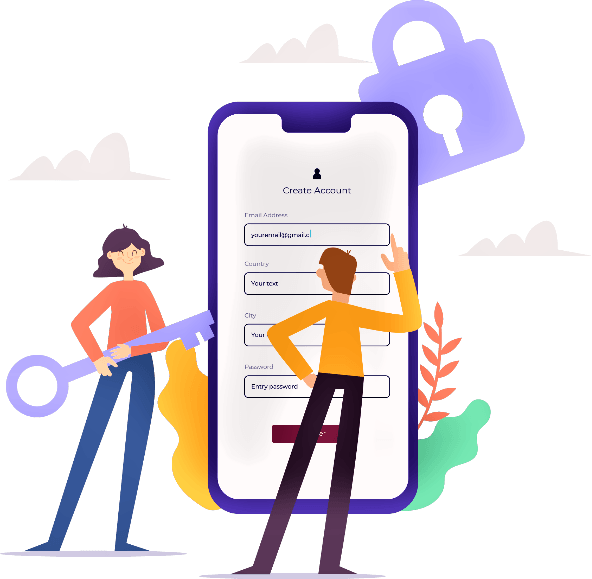20 Tips for Aligning SEO & PPC for Better Ecommerce Results
The e-commerce industry is experiencing a surge as a result of the pandemic. People are relying more on online shopping as a result of traditional outlets being understocked or closed. Additionally, since the majority of our audience is afraid to venture outside, e-commerce is the ideal way to ensure our safety and meet our everyday demands. Additionally, large corporations like Amazon, Myntra, Grofers, etc. offer basic necessities with steep discounts these days, which appears to be more advantageous to individuals. Gather your SEO and PPC resources at this time to improve your e-commerce performance. For better e-commerce outcomes, we’ve chosen 10 SEO tips and 10 PPC tips.

Here are 10 PPC tips for better e-commerce:
1. Your go-to list should include negative keywords:
Negative keywords instruct a search engine to hide adverts for particular queries. Only clients who are interested in your product will see your ad as a result, increasing organic traffic. This helps to weed out irrelevant product searches. Additional advantages include avoiding cross-promotional matches if you are running many PPC ads.
2. Choose solitary keyword ad groups:
Even though Google suggests having 10–20 keywords, these Ad Groups only have one. As you just concentrate on one keyword in your URL, content, landing page, and Meta tags, using just one is optimal. You can create an ad specifically for one keyword by using just that one term to start the ad. Once we concentrate on a single keyword, we may swing our ads in that direction and draw in an organic audience.
3. Ensure the optimization of your product pages.
It is crucial to understand that SEO is a great technique to gain from your website and pages because it aids in expanding your organic reach and generating more organic leads. It helps if the product has a nice title and description with keywords so that people can locate it easily. This may also be advantageous for SEO.
4. Pick your timing carefully:
It is true that timing the release of your advertisement might be advantageous. Only if you have a solid understanding of your audience can you pull it off. You can adopt a budget-friendly plan for a 24/7 schedule when you first start. You can make bid modifications for the time the campaign should be scheduled after you are aware of the active times.
5. Bid Wisely!
Making a successful bidding strategy is crucial because our bids serve as our cornerstone. Making smart goal definitions is the first step before selecting a method. The four common objectives and approaches used to them are:
- Click-based Techniques
- Views- and interaction-based tactics
- Strategies Based on Impressions
- Strategies Based on Conversion
Pick your approach carefully since without it, it would be difficult to reach the correct audience and accomplish your objectives.
6. Select Locations Consistently:
Ads are displayed using the Google AdWords system depending on a person’s IP address or GPS location. Given that it depends on your particular firm, choosing a location is a much simpler chore than selecting bid techniques. If you work as a repairman, your clients will be in your city, but if you sell clothing, accessories, or jewellery, you can pick cities, states, or even entire countries as your market! If at all possible, play about with the location sphere to see if you can introduce a new sphere to your market.
7. Pick your advertising platform carefully:
It’s crucial to carefully select the platform where your advertisement will appear. The top visited websites are Google Merchant Center and Amazon Advertising. Retailers are using these channels more frequently as a result of rising pandemic sales. Google has experimented with running Amazon shopping advertisements on its website after observing the expansion of Amazon’s running ads.
8. Immediately improve your product pages!
To enable internet searches regarding the goods, this entails adding relevant keywords to the title tag and other areas. Never abandon your page without optimising it. It supports both your SEO and PPC campaigns. Your product description has to include pertinent keywords.
9. How to Land the Best Ad Position:
This can be accomplished by continually improving your bid optimization for your PPC ads. It necessitates a lot of thought and time. Every day, you should check your analytics. There are two popular methods for bid optimization to take into account: manual and algorithmic. The most fundamental technique for managing bids is manual, followed by an algorithmic approach that integrates automation.
10. A/B testing must be done!
Checking what in your PPC Campaign is effective and what is not is an essential stage. Compared to traditional testing techniques, A/B testing for PPC is simpler. You must test your ad copy’s title, body, link, keywords, and other elements. Testing is necessary to determine which keywords perform better in terms of conversions, CTR, generating and boosting awareness, etc. With each keyword serving a specific purpose, your bank of keywords grows as you test more.

Here are 10 SEO Pointers for Better E-Commerce:
1. Produce fresh, improved content:
Nowadays, it’s simple to get content, however it can be difficult to find content that is pertinent. Therefore, be careful to produce fresh content that is pertinent to your audience. Continue after that! Making new pages that support their decisions with your information and pages instead of just more stuff won’t assist.
2. Pick relevant keywords:
Selecting keywords that are searched for and bring your product to your audience is the most crucial aspect of SEO. Make sure that those product keywords are being targeted on your pages. Not only should you pick them, but you should also incorporate them into your URL, landing pages, web pages, and content to help steer customers in the right path and convince Google that your information is worthwhile and pertinent.
3. Write with a buyer in mind:
Simply put, writing with the intention of the buyer is writing with the goal of solving their issue. People don’t use keywords based on what Google wants; instead, they write about their needs and issues using terms that immediately come to mind. Therefore, write to them as though you are solving a problem, rather than in an official and professional tone.
4. Improve your product photography:
Because people look at photos when purchasing a product, it is crucial to properly optimise your product photographs for search engines. Considering Meta tags, the file’s actual name, and the requirement to include a few carefully selected keywords in the product description.
5. Monitoring website analytics:
Today, SEO is thought to be the primary factor in business growth. SEO aids in identifying audience behavioural changes. The SEO must be improved since if a customer takes longer to search for a product, they won’t locate it quickly enough.
6. Increase your site's speed:
While keywords are crucial, it’s also critical to have a functional and up-to-date technical SEO strategy. In addition to helping SEO, this enables the audience to interact with a user-friendly website. No matter how pertinent your material is, a user won’t wait for it to load before moving on to another website. Not only this, but a fast, functional website performs higher in search engine results on Google.
7. Link Internally:
Internal linking between items and categories is vital for higher search engine rankings. Internal linking improves site navigation, making it easier to find products and enhancing the purchasing experience.
8. Take immediate learnings from search:
Getting real-time insights enables you to stay informed about emerging trends. It’s crucial to reply to them promptly and keep a careful eye on what’s trending.
9. Your product descriptions concise SEO-Optimized:
By using keywords in your product descriptions, you can also raise your ranks. It’s crucial to write quality product descriptions that include all the information a potential customer could want to know about a product because the majority of them are copied and irrelevant.
10. Examine your current approach:
The most crucial thing to remember is to maintain track of your current plan. Determine what is effective for you and what needs to change. Without having to repeatedly test new phrases, these can assist you in knowing what keywords to use for better results.
Wrapping It All Up…
These are 20 tips that can help in the better management of e-commerce and also help in the increase of sales. It will also help in the better results of E-Commerce. If you are following these 20 tips, then you can move forward, and also make your page rank better. But it can become very hectic to follow everything at once. You must take help from SEO experts, or organisations that are working for the same. One such organisation is RG Infotech that helps in the proper management of SEO and also provides SEO solutions to increase your e-commerce growth with its SEO and PPC strategies.



 rgisales
rgisales



